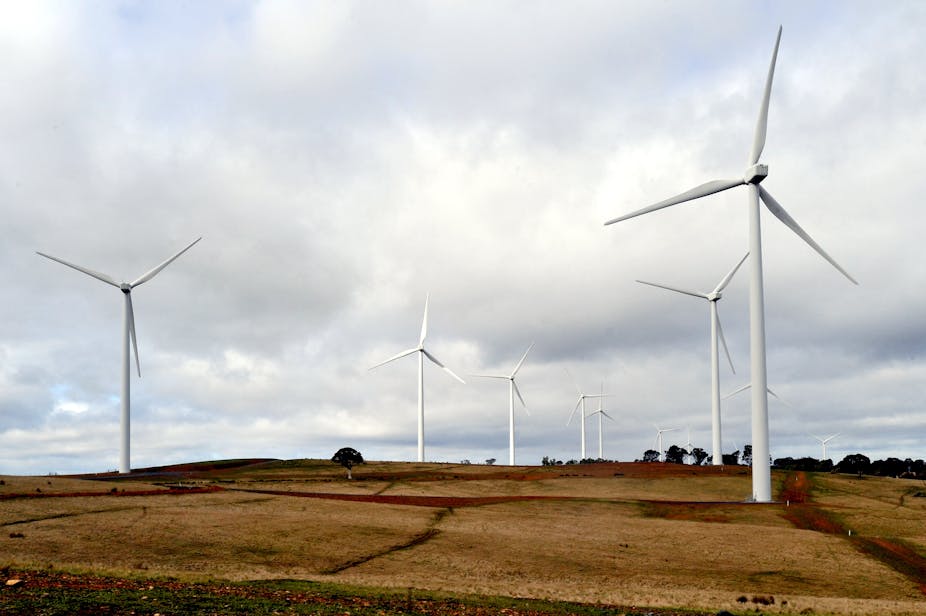If Bill Shorten and his climate spokesman Mark Butler can’t sell Labor’s proposal for Australia to have 50% of its electricity provided by renewable energy by 2030, they should probably vacate the political persuasion game.
They start with the advantage that renewables are very popular with voters. An Essential poll out this week found 50% believed the government should prioritise support for the renewable energy industry over the coal industry. Only 6% thought support for coal should be the priority; 28% said both industries should be treated equally.
This was in contrast to people’s perceptions of what the government’s current priorities are – coal, 49%; renewables, 12%; equal treatment, 13%. When people were asked whether the government gave enough support to various sectors, majorities thought renewables did not get sufficient support: wind farms, 56%; large scale solar, 55%; roof top solar, 57%. Only 12% said coal did not get enough government support.
These findings come after the Coalition’s lack of enthusiasm for renewables has been on display with Tony Abbott’s attack on wind farms and the government’s directive to restrict what the Clean Energy Finance Corporation invests in.
The 50% renewables goal is just the first stage in Labor’s climate policy. Shorten has released it ahead of the ALP national conference, which starts Friday. He won’t be putting out the more challenging aspects of that policy – Labor’s position on post-2020 emission reduction targets and its planned emissions trading scheme – until some unspecified time later. A section of the party would like to write post-2020 targets into the ALP platform but that is unlikely to get up at the conference.
After the renewable energy announcement, the government quickly ramped up the scare campaign. Environment Minister Greg Hunt said it would have “massive costs”, and even quoted the militant CFMEU – a rather startling source for the government to invoke. Hunt said the main thing was that this was a “desperate diversion” by “Electricity Bill” from his planned “massive new electricity tax” which would drive up power prices.
At present, the Renewable Energy Target (RET), recently legislated afresh after difficult negotiations with the opposition, is equivalent to 23.5% by 2020.
To support its argument, the opposition points to the targets of a range of other places: Denmark, 50% by 2020; California, 50% by 2030; Germany, 55-60% by 2035; Sweden, 63% by 2020; New Zealand, 90% by 2025; and Norway, 114% by 2020.
Butler was reluctant on Wednesday to be definite on what would happen to power prices, because many variables are involved. But he pointed to the government’s own Warburton inquiry into renewables, reporting in August 2014, which said that overall the RET was “exerting some downward pressure on wholesale electricity prices” when demand for electricity had been falling.
The Warburton report also said the direct costs of the RET “currently increase retail electricity bills for households by around 4%, but modelling suggests that the net impact of the RET over time is relatively small”.
Shorten uses a broad brush in promoting his 50% goal. “I believe in the long term it’s going to save consumers money,” he told the ABC, adding that it “ticks all the boxes” on jobs, investment and tackling climate change.
The government is attacking Labor’s failure to be precise about the effect on prices and its lack of modelling.
But let’s be realistic: in a discussion about an ambition for 15 years on, precise modelling risks not being worth the spreadsheet it appears on. The desire that we see in political debate for absolute precision when talking about long-run policies is unrealistic and potentially misleading, especially because much will depend on rapidly changing technologies.
It’s true that there are costs in increasing renewable energy, although they are particularly transitional. And as the use of renewables grows, the fossil fuel sector will be disadvantaged.
But with mounting pressure to act strongly on climate change, the world will be moving towards cleaner energy over coming decades and there will be costs to Australia if it does not do the same.
The renewables issue provides Labor with a chance to highlight that Abbott is out of touch with public opinion in this area. But it is harder to judge where the electorate will be, come election time, on the wider carbon issue. That will depend on factors such as the outcome of the Paris climate conference, and the respective advocacy skills of Labor and government.
Abbott had considerable success with his anti-carbon tax campaign in the 2013 election, much helped by the issue itself being entwined with Julia Gillard’s broken promise.
But parties always need to be beware of thinking they can fight the next election on the same formula as the last one.
Having said that, Labor can’t delude itself. Its overall climate policy will be a difficult sell. It is sensibly backing into it via the easiest route.

